I have dedicated much of my Jupiter’s observing time in 2021 to test this promising sensor for IR planetary imaging. This is the first article of my investigations (two more will come)!
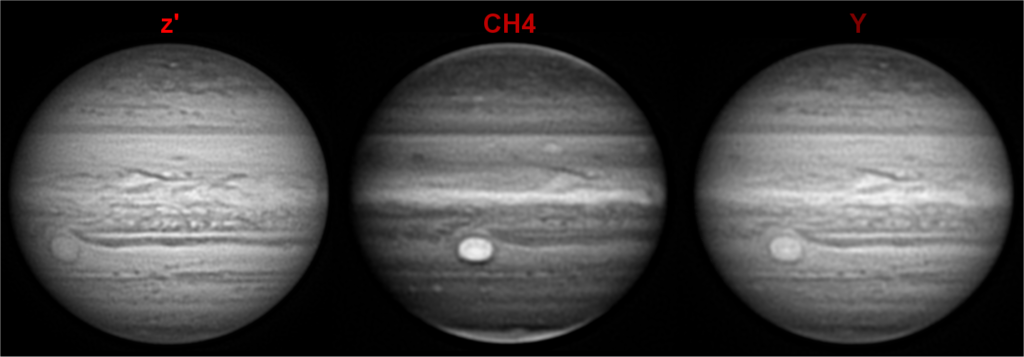
A few cameras that were outed in 2020/2021 come equipped with that color sensor that has many advantages. I will discuss there only its very high sensitivity in the near IR (beyond a wavelength of 700 nanometers). You can read on this blog a post dedicated to the description of the IR filters available for planetary imaging… knowing that some of them will not completely suit the IMX462 (but this will be left for the next article!).
The camera I am using is the ZWO model – ASI462MC – but you can find it under other brands such as QHY or Player One. Its arrival on my equipment lead me to reconsider the set of filters I would use with it. I have identified three main bands potentially interesting, that you can see on the graphic below, along with the spectrum of Jupiter:
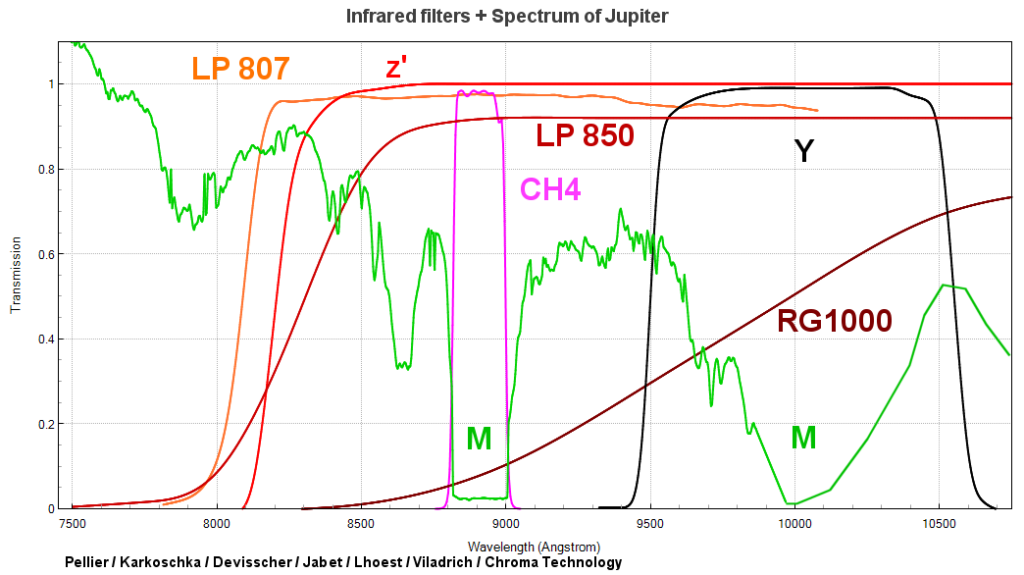
Those bands are:
1) A wide IR band, that covers all the monochrome part of the sensor, that to say from around 800 nm. Three filters fit this need ; the Astronomik IR807, Sloan z’ filters (mine is from Astrodon), and long-pass 850 nm filters such as the ZWO. The interest is to use them to get the brightest possible image, high signal to noise ratio (SNR) and relatively high resolution (as much as one can get in IR).
2) The 890 nm methane absorption band filter, that will observe the relative height of clouds in the atmosphere of the two jovian planets. This is of very high interest.
3) And finally, I tried to fully exploit the very end of the sensor’s sensitivity, around 1 micron (1000 nm). The others sensors are almost blind there, but the IMX462MC still pretends to a response around 30%, which is remarkable for this technology. So far I was using a RG1000 Schött filter, but as a replacement I have decided to try an Y filter (again from Astrodon). “Y” is a photometric band designed to calculate colour indexes of very red objects, such as brown dwarfs, that fortuitously corresponds to another CH4 band in the jovian planets’spectrum, as well as to the thermal emission band of the ground of Venus. Y filters can also be found from Baader planetarium, although the brand wrongly writes it with a lowercase “y’ ” – the filter is not part of the original SDSS system and must be written with an uppercase.
The 890 CH4 band: finally an amazing camera!
This is where the IMX462 developped all its potential. Its sensitivity at 890 nm is much higher than any other sensor even the b&w, such as the one that equips my ASI290MM. This allows one to use the camera at much higher framerates, but also with a more performing sampling, since it can be used at binning 1x while at the same focal length, the IMX290MM will ask for binning 2x (and still not at the same framerate). How far is the time when I needed to expose each frame at half a second in CH4! Below is a comparison of both cameras with the same settings:
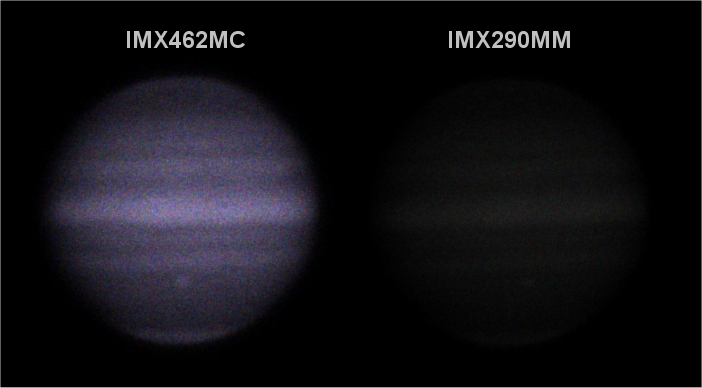
It is still unavoidable to perform long derotations with that filter (10 to 15 mn) but the images are sharp with many details and an excellent SNR. This is one of my best from 2021, with Oval BA, on September 23rd:
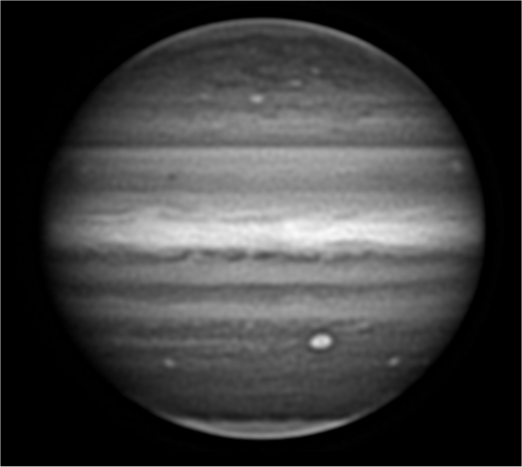
The results with the wide IR band
Again the sensor held its promises with very high framerates and high SNR on the final images. The b&w sensor is less distanced, but the 462 is still much better. Now, the comparison below is on a different basis: I set both cameras at the same histogram, and see which one of the two had the most efficient settings. The IMX462 needed 10 ms, gain 270, but the IMX290 asked for 15 ms (half more time, which means 33% less frames at the end!) and gain 350.
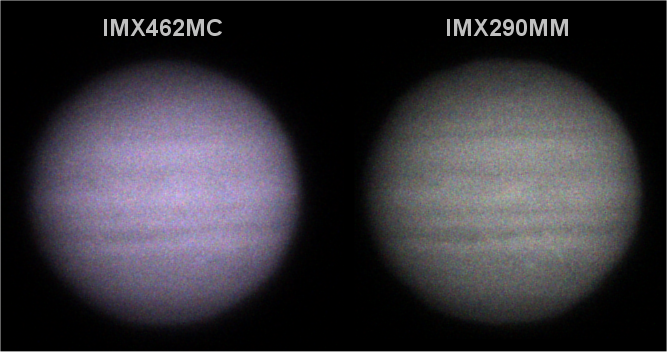
Beyond 800 nm, Jupiter and Saturn show a slightly higher general contrast that around 700 nm. This is because their spectrum is becoming to be more influenced by the methane absorption. Consequently, higher cloud structures appears as slightly bright, such as BA and GRS on this z’ image:
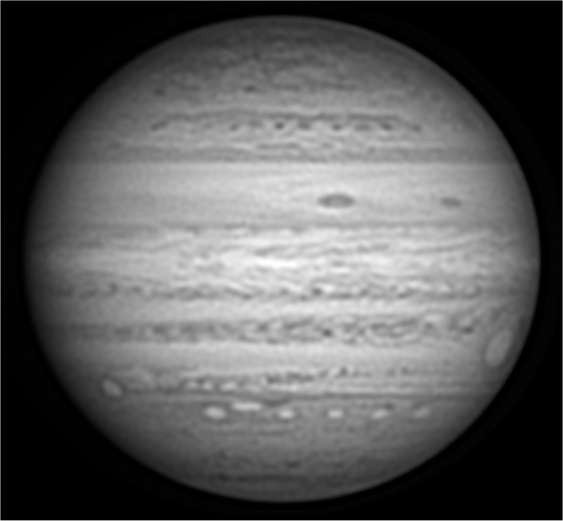
These filters also helps to cut the seeing when it is not good. This can be an advantage during mediocre nights. However, they also noticeably reduce the resolution of the telescope, and no sensor can do anything against this. So they will always be in concurrence with IR filters that have a shorter cuton around 700 nm. I will test them on the next article :)
At 1 micron: the camera is still rocking, but is it really interesting?
Finally, it wasn’t difficult either to get images in the Y band, at a wavalength where the IMX290MM is already almost shut down. The comparison this time is entirely against the latter:
– IMX462MC: 35 ms, gain 300, histogram at 80%
– IMX290MM: 100 ms, gain 350, histogram 50%
As already explained, the Y filter matches another CH4 band, around 1000 nm. Its passband with a width of 100 nm is none the less larger than the physical band of the jovian spectrum; this results in a lower contrast effect, since less absorbed part of that spectrum will be included in the image. The result is half CH4, half classical IR… despite the curious aspect it brings to the view, my experience from this season still does not conclude that 1000 nm imaging of Jupiter or Saturn is of a high interest for the amateur (unless you have some very special projects of multiband comparisons such as Antonio Cidadao).
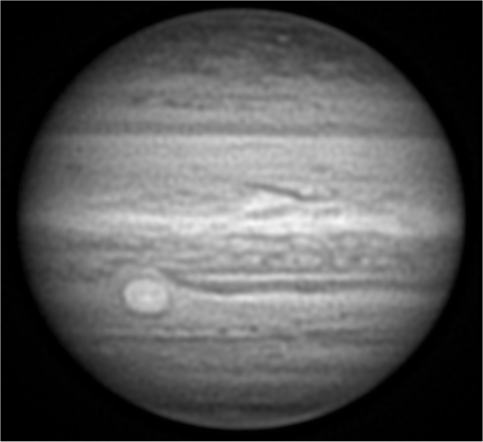
The next article will cover the use of R+IR or short-wave IR filters with the IMX462.

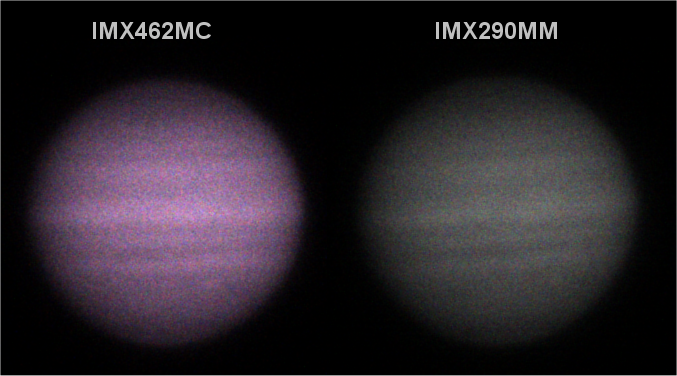
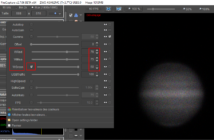
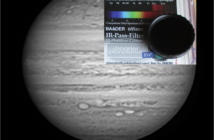
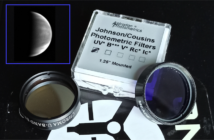
6 Comments
Thanks Efrain :)
Excellent article and I concur with your findings comparing on my QHY 5III462c.
Grazie a ti Sebastiano !
Grazie Cristophe come sempre articoli molto interessanti
Merci Jules. A la fin de la série d’articles je procéderai également à une mise à jour de mon guide sur l’imagerie avec cam couleur :)
Merci Christophe ! J’avais questionné sur un post FCB votre retour sur les cam couleurs en complément de votre livre sur l’astrophoto planétaire ! Content de lire votre article ! ;)